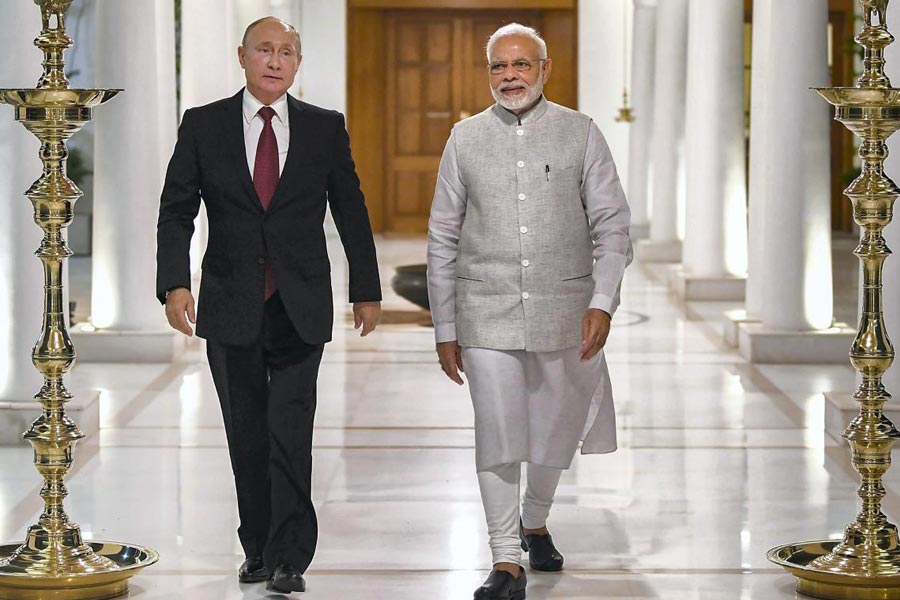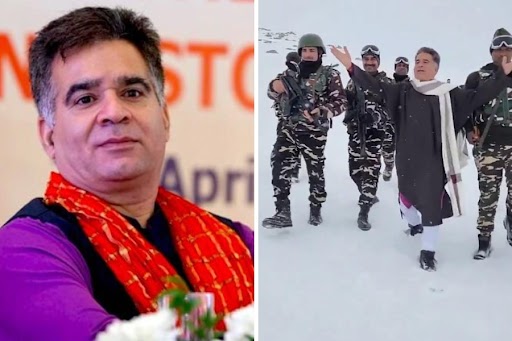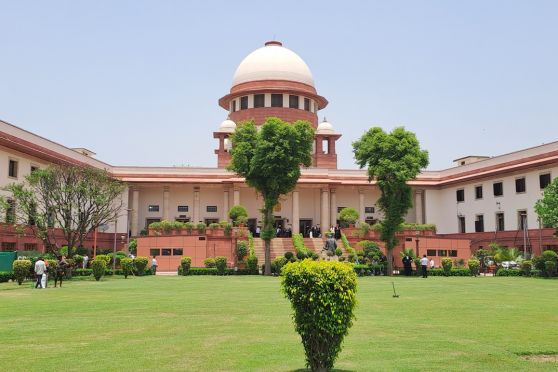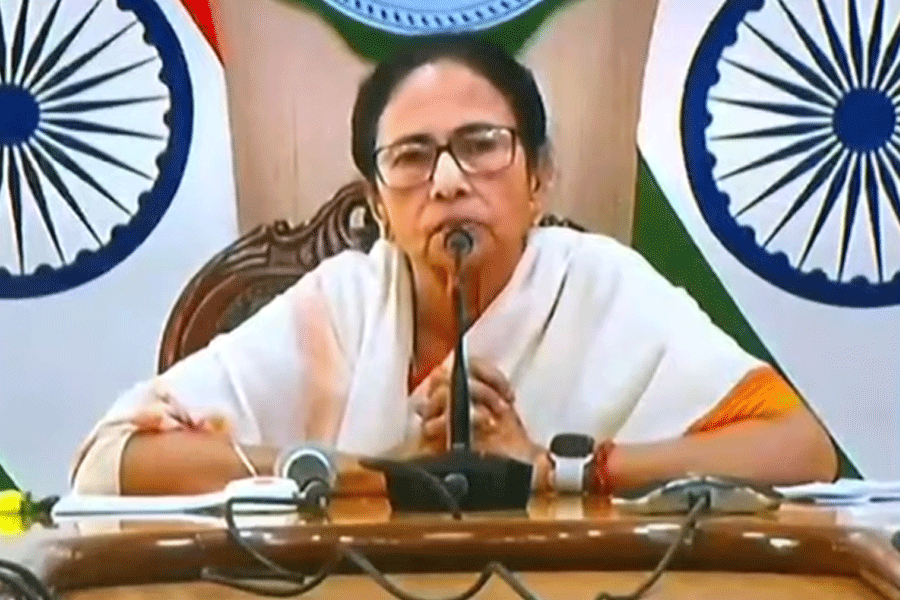 |
| Tourists at Rohtas Fort. Picture by Sanjay Choudhary |
Never mind the guns and sophisticated weapons, Lord Hanuman remains the crisis manager.
The men in uniform start invoking the Lord’s name as our vehicles whirl to life and begin their journey to what was once a forbidden Maoist island — the majestic Rohtas Fort.
The once-impregnable fortress, which had been in the grip of the Maoists, was “liberated” as a gift to the people of Bihar on Republic Day last year. Perched atop the plateau of the Kaimur Hills, some 1,600 feet above the Sone Valley, the mighty fort had been in the control of the Maoists who had set up training camps within. Even security personnel feared to trudge on the hilly terrain that the Maoists called their “liberated zone”.
We began our journey at 9.30am on January 20 in a Tata Indica from Rohtas police station that remains closed from inside even during the day. More than a dozen members of a road-opening party in two service jeeps escort us. They are led by Rohtas police station house officer (SHO) Jitendra Yadav.
We are dropped off after 1km at the spot from where we must begin our trek up to Kaimur plateau. Security personnel armed with state-of-the-art combat and surveillance equipment join us.
Large hoardings at Sasaram and on Grand Trunk Road beckon tourists to visit Rohtas Fort. But there is no proper road to the historic site. Sharp stone chips and pebbles greet the visitors along an old manmade path. The tourism department is toying with idea to erect a ropeway to the fort. Chief minister Nitish Kumar visited the fort on December 24, 2011, and announced a plan to develop the site as a tourist spot. He directed the district administration and the tourism department officials to chalk out a detailed plan for the purpose.
We take the manmade route to the fort, believed to have been named after Rohita, the son of King Harishchandra, who stayed here several years in exile. SHO Yadav and his men prefer a circuitous course. Before they begin Yadav barks: “Be alert! You can come under fire from any side, any time.”
According to old texts and inscriptions found near Rohtas, the fort was in the possession of the Hindu king Pratapdhavala of the Japla dynasty. Other inscriptions cite that it was ruled by the Khyarwala clan, who were sovereigns of Shahabad — the area now comprising Bhojpur, Buxar, Kaimur and Rohtas.
The Hindu kings of Rohtas constructed a road through the jungles leading from the foothill to the plateau, carried out the fortifications on the jungle roads and built the four gates on the four ghats. The main fortifications at the Raja and Kautilya ghats can still be seen. But not much is known about their reign. The fort came into prominence after it was captured by a ruse by the Afghan king Sher Shah Suri in 1539, a year before he ascended the throne in Delhi.
A personnel of the 215th battalion of Central Reserve Police Force that has been recently engaged in anti-Naxalites operation in the Rohtas-Kaimur region tells me: “Sir, we are going to the fort for the first time. We have learnt that the area in the vicinity of the fort was under the control of the Maoists.”
Years of community policing has helped the cops gain a toehold in the region. Now they can conduct raids against the rebels in this area. But this is still not a stroll through a luscious hilly region and forest cover — it is a war zone. Ambushes are common, and landmines wait stealthily to ensnare a careless step.
Legend has it that Sher Shah Suri asked the Hindu kings of Rohtas to protect his women, children and treasures while he was busy fighting Humayun in Bengal. The king agreed, and the first few palanquins that arrived at the fort carried women and children. But the ones that followed had Afghan soldiers who captured the fort and forced the king to flee.
Before we reach 400ft, Rohtas superintendent of police (SP) Manu Maharaj appears on the scene. “I had planned an operation on the other side of the plateau but I changed the plan in the last minute and decided to join you,” he told us.
The SP added: “I have intelligence that some hardcore Maoists from other states have assembled in the area. So I decided not to take any risks.”
I can’t help notice that Maharaj wears a bulletproof jacket and has an AK 47 assault rifle slung on his shoulder. He also sports a thick moustache. It is a far cry from the clean-shaven Patna city superintendent of police that he was a little more than a year ago. But it suits his persona as a gun-totting law keeper.
“Saheb sirf 20 minutes mein pahar pad chadh jate hain (Saheb climbs the hilltop in 20 minutes only),” informs one of his bodyguards. For lesser mortals, the climb takes over an hour.
Since he joined as Rohtas SSP in February 2011, the operations against the rebels have gained steam and more than 60 hardcore Maoists, including a dozen area commanders, have been nabbed.
On our climb, we come across a group of villagers grazing cattle on the hills. “What are you doing in this lonely place?” Maharaj asks one of them. They just shrug their shoulders. In the group are a large number of children below 15.
“They (the children) work as informers or messengers for them (the Maoists),” said a policeman escorting us.
After describing the landscape to his men, Maharaj leaves. “I will meet you at some other point,” says the 2005-batch IPS officer as he embarks on his swift upward climb.
We follow at a slower pace. After reaching the hilltop, our team has to cover about two-and-a-half-kilometres on foot to reach the fort.
On the way, we chance upon some elderly men irrigating wheat crop on their field. “Lagta hain koi bara operation hone wala hai (It seems that some big operation is under way),” said a 60-year-old resident of Babhangama village.
The mukhiya of the village, Eahtashan Yunus Khan, told me that the residents of Babhangama cut the stones on the mountainside by hand to make an approach road to the fort. “There is no electricity and no drinking water facility at the village. We have to depend on the lone well for potable water,” he said.
Near the village well, some girls and boys were washing their clothes. “Don’t you have school today?” I ask a girl, who introduces herself as Sabita. She tells me that her parents asked her to wash the clothes as it was a sunny day.
A 12-year-old boy said the only school in the village is closed whenever their teacher goes on leave. The school has only two teachers for about 50-odd students. “No teacher wants to join because of Maoist activities,” he adds.
We enter the fort around 1.30pm. The armed policemen have already positioned themselves in a tight security cordon around the historic monument. Some of them are on the watchtowers and ramparts that were built into the 600-year-old structure to impede any attack.
“The force will remain here for two days. Take care of them and arrange for their stay,” Maharaj, who has joined us again, instructs the SHO.
The grandeur of the building is breathtaking. “The fort is spread over 22sqkm. You cannot see everything in a day,” SHO Yadav tells us.
You can see the Jama Masjid built by Habib Khan, a trustworthy soldier of Sher Shah, in 1583; the Diwan-e-Khas, a private hall decorated with etchings of flowers and leaves is sure to appeal to your aesthetic sense; and the palace built by Raja Man Singh, the Hindu general of Akbar, when he was the governor of Bihar and Bengal is a mesmerising example of Mughal architecture. The most interesting of course is the Hanging House, which gets its name because of the steep fall — 1500ft without a break. Legend has it that a Muslim fakir was thrown from here into the valley three times but he escaped unhurt despite being bound.
“If an approach road to the fort is constructed, it could be developed as the most prominent tourist spot between Bodhgaya and Varanasi (in Uttar Pradesh). Its grandeur is hidden from tourists because of lack of basic infrastructure,” said Chander Parkash, a retired director of Himachal Pradesh Electricity Board, who recently visited the fort.
Parkash is a tough nut — he climbed the steep route to the fort with the help of only a walking stick. He is 72.
“It is now time to leave,” Maharaj tells us as the sunlight starts to fade. “My security guards will accompany you on your return trek. We usually avoid the route through which we came up.”
Though the forces of the state now occupy the fort it will take quite sometime before fun-loving tourists start to crowd here. The presence of the security men is too ominous, the memory of the rebels too fresh, the road too difficult.










